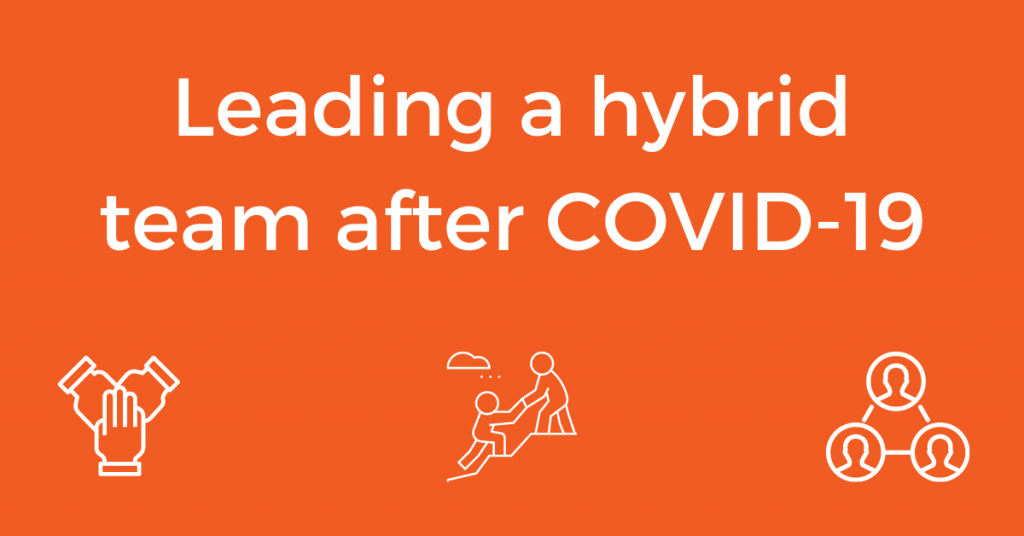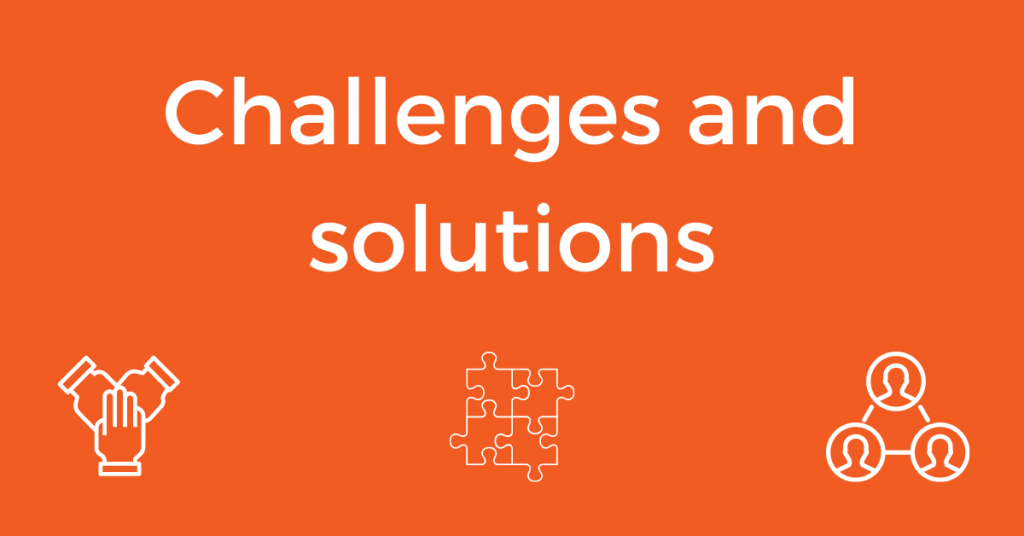Women have continued to rise in the face of adversity. They are doing more to support their teams and advance DE+I efforts than their male counterparts (McKinsey). They even take less time off after having a baby or surgery because they fear losing the position that they worked so hard to achieve. However, their work typically goes unnoticed and is unappreciated by most organizations.
Join us in part 2 of A Win for Swoon: Celebrating Influential Women in Business. Where our panel will discuss their career journeys, how to make room for continued learning, balancing work-life, risks they have taken, and advice they have for other women in leadership.

Panel
Catherine Grosz – Manager, Corporate Membership at WBE Canada
Rene Gellerman – President and CEO at United Way Quad Cities
Quyen Pham – Vice President, Swoon Consulting
Sara Riggs – Vice President, Recruiting at Swoon
Tatyanna Sarjeant – Major Account Manager and member of the Women’s Initiative Network at Swoon
Tatyanna: What is one thing you wish someone had told you during your career journey?
Sara: Your career journey is unique to you. It is your journey, do it your way. There will be challenges and things thrown your way, and you may need to pivot, but you cannot let those things hold you back. You are not always going to get it right, which is okay. You just need to learn from your mistakes.
Take your time, do the right thing, lead with honesty and transparency, and keep learning. Make sure you have a robust support system and mentors to help you along the way but remember that you are in the room for a reason, and sometimes you need to be your own cheerleader and go for what you want. Believe in yourself!
Tatyanna: How do you make room for continued learning?
Quyen: Continued learning is essential no matter what you do. So, how do you not make room for it? Earlier this month, I was on a different panel where I talked about the McKinsey study of women in the workplace. In this study, they talk about how when you have a diversity of ethnicity and women in your leadership and executive ranks, as a company, you are outperforming profitability in the double digits. So, it is not only about the feel-good factor or the social right and responsibility. It comes down to dollars and cents. So ultimately, that question comes down to how do we not do it?
The first step is to be naturally curious as individuals, and the second is to be naturally curious about your own unconscious biases. For example, we might think that we are very inclusive. Still, I recommend that everyone takes the journey to look into what unconscious biases you have and how they might be impacting your decision-making. Ask yourself questions like, who you are allying with, who you are working with more closely, who you might bond with more and therefore give them more opportunities. It is crucial to figure that out for yourself as a leader and an individual contributor, no matter your role. It is essential to understand yourself and be aware of it.
I also recommend reading the book, Unconscious Bias because it talks about how it impacts corporations and companies. There is so much information for us to be curious about and learn. From there, understand and identify biases in your workplace and begin to educate yourself in the organization and how unconscious bias impacts the organization. Another vital aspect to consider is tying that back to ROI for your company. No matter what we are doing, we are still businesses, and we are still searching for ways for us to be successful. It is not only the right thing to do because that is obvious, but it is also proven to be a good business decision – to have diversity in your team and diversity in your leadership. It is critical for long-term success for the company, so it is not about making room for diversity but prioritizing it and continuing to educate yourself as an individual and pushing your company to as well.
Tatyanna: How do you balance your work-life and personal life as a leader?
Catherine: Work-life balance is very different from person to person. I want to share how I balanced my work life over the many years of being a single parent. I started back in corporate Canada with an 18-month and a 3-year-old. Thankfully I had a very wise mentor, my mother, who always stressed that the first 5 years of a child’s life are their most informative years and nurture that. I have had many mentors while having a young family that instilled in me that work-life balance is not just a nice to have. It is a necessity because you only get so much time with them.
So, I took on roles within my purview of understanding where my priorities were. My children are my priority, and that is not to say that I did not want to give 100% to my job. It just means that I had a different way of evaluating if a new role was a fit for me or not. I would take on roles, especially leadership roles, where I could give 100% to my family and 100% to my job. Moving up in my career was not always a possibility, so once my children were grown adults, I was able to focus on my career. That was when my work-life balance changed once again. I was able to take on more leadership roles, work more, and put more into my work instead of balancing the two.
I have been hearing from some women entrepreneurs that they have left their corporate Canada senior leadership roles to have a better work-life balance. For example, I recently had a conversation with a woman who told me that she took 6 weeks to recuperate after her son was born and went right back to work. When I asked her why, she stated that she had worked so hard to get into that leadership role that she did not want to get passed up for a promotion or lose the role altogether.
In conclusion, it is safe to say that when balancing work-life, make sure that you know your priorities and understand your support system. For example, are you the key source of income in your household? Is it okay to miss that parent/teacher conference or recital? Whatever it is, work closely with your current employer to ensure that you do not miss out on any upcoming life opportunities.
Tatyanna: What is the biggest risk that you have taken as a leader and why?
Rene: In 2020, during the time of the George Floyd murder and Black Lives Matter, I had to decide how we were going to react. Being the largest nonprofit leader in our community that has been working on closing the opportunity gaps by paying lip service to it but not demonstrating that in significant ways, I knew we had to do something that we have never done before. I could not wait to see what others were doing either, so I gathered our team together, who is not very diverse, to develop a plan of action. We put out a statement immediately, but we also took action to follow that up. This is where our 21-day equity challenge came about, which we still do to this day, and it is now in several communities across the United States. For this challenge, we invited the people in our community to sign up for a daily email to better understand what biases might be, what it means to be an ally, what the realities are in our community and the challenges people of color face. From there, we produced an equity summit.
I say that was a risk only because I did not know if we would say the right things, and then with the 21-day equity challenge, there were some things that I was sure would bother some of the stakeholders. So I had to balance that risk, and I will say, it paid off. I am proud of our work. Now, our community looks to United Way as being committed to closing achievement and opportunity gaps for people of color.
Tatyanna: What is one piece of advice that you have for those in our audience today?
Sara: You can do anything that you put your mind to. You should get out of your comfort zone and challenge yourself because hard work does not go unnoticed. We often talk about that at Swoon – promoting from within, being an earn your stripes organization, and how success breeds success. I genuinely believe that you can achieve it if you put your mind to it. There is a support system to help, guide, and cheerlead you along the way, but do it, improve yourself, and benefit from it.
Catherine: As women, we are emotional beings. I know that I have sometimes let my emotions oversee the constructive criticism I have received in my career. Studies have shown that women are more risk-averse than men, whether in business, their finances, or their lives. So, my advice would be not to be so afraid. Take a step back and look at where you are in relation to where you want to be. Then, ask yourself, what steps do I need to take to get there? If you come across a brick wall, how will you knock that wall out and get to your next step? Once I did that in my career, I had more confidence to say, enough is enough. This is where I want to be, and I will get there.
Rene: My advice would be to stay curious. I was the first person to graduate from college in my family. My mother was an alcoholic and manic-depressive. No one ever predicted that I would end up where I am. I credit that to always being curious, a lifelong learner. I never assume that I know it all, and I value other people’s opinions. Being curious and a learner inspires you to challenge the status quo and take those risks.
On the other hand, make sure to surround yourself with people that can build on you. Madeleine Albright had this saying that there is a special place in hell for women who do not support other women. Sometimes we tend to get a little competitive, and we need to overlook that. I will say I have noticed that about Swoon, everyone roots for each other, which is absolutely amazing.
Quyen: I will emphasize one thing that was previously mentioned, and that is taking risks. As women, we do not tend to take many risks because we have a lot of fear around the unknown. There is a syndrome that we all have, and everyone has, not just women, which is imposter syndrome. It is natural, and I think we have to remind ourselves that everyone suffers from it when doing something new. To be able to see the unknown as something exciting is what we should all strive for – to see that there is a risk and still put yourself out there to go for it. Those are the times that you will learn the most in your careers. Those are the times that you will grow the most, which allows you to discover your strengths and see what you are truly capable of.
There will be times in your career when you will fail, and that is okay. Taking risks was something that I struggled with as I am a little risk averse. Being an Asian woman in a leadership position, I did not want to take risks because I thought I might lose everything I had fought so hard for. However, one of my mentors told me something that helped me overcome that sort of fear that I had. If you get something 60% right, you will be successful, and that is okay because that 40% that you do not get right, you are going to learn from, which is even better for you to continue to grow and move forward. So, I have always taken that mentality of just taking the risk because if I could figure it out 60% of the time, I would get it right, and that will be just fine. So, I would say, women, men, whoever it may be, take the risk because that is how you learn and grow.
Click here to read the first part of our WIN panel discussion!
We all know that some of our team members are just dying to get into the office, while others might be skeptical. Having a hybrid team allows your employees to choose what’s best for them. However, it means that you will need to adopt a new type of leadership.
Converting all workflows to remote-first, even for those working in the office, is going to be essential. Why is this? In-office workers may feel like they are over-rotating to make sure remote team members feel included. In contrast, those working remote might be sensitive to communication gaps.

Hybrid team: “A flexible work structure where some employees work remotely, and other team members work from a central location or office. Hybrid team structures allow employees to decide whether they prefer an office environment or working from anywhere remotely” (OWLLabs).

- Employees don’t feel pressured to go into the office if they don’t feel comfortable.
- Those that want to return to the office can
- It makes it easier to follow social distancing regulations.
- It helps reduce the spread of coronavirus.

Team Meetings
Take a minute and think about your meetings before COVID-19 and while working remotely. What worked and what didn’t? You will want to reconstruct your sessions to be engaging, productive, helpful and friendly to your remote team members. But how do you do this?
One way would be to have all team members join the meeting virtually. This will ultimately help reduce the number of informal conversations that happen after remote employees leave the call and will also help reduce the possibility of coronavirus spreading around the office.
Another way would be to have your in-office employees join in-person and remote employees join virtually. With this option, you will want to have a set way of relaying information that may arise after a meeting to those that are remote, whether that be an email or making a note to discuss it during your next team meeting.
Define Clear Working Hours
This will help your remote employees step away from work. Also, it will allow you and your team to know who is working when and where. Sharing work calendars is a great way to boost the visibility of this information and help everyone know when they can expect someone to answer emails or phone calls.
Understand the Benefits of Each Working Situation
Once you understand the benefits, you will want to be sure that you ensure fairness. For example, remote employees don’t have to commute and can pick up their kids from school or schedule appointments since they can make up the hours afterward. To ensure fairness, you might encourage the same for your in-office team members by giving them some flexibility during working hours. All in all, you will want to be sure you lead by example, and whatever you allow yourself to do, you also allow your employees to do the same.
Setting Aside Time for Each Team Member
You should give the same amount of attention and support to both your remote and in-office employees, no matter their role.
Measuring Performance in a Fair Way
If your focus is still on effort or number of hours at desks, you may want to rethink to basing metrics off set objectives. You want to concentrate on the quality of the work that they’re producing, not on how much time they spend at their desks. Also, look at the career progression paths set into place and ensure that they’re fair for both in-office and remote team members.

Communication
The biggest challenge with a hybrid team is going to be communication. The good news is that we have a lot of options when it comes to virtual communication than ever before! We have Zoom, Google Hangouts, Teams, etc. You probably became more familiar with these while social distancing. For your hybrid team to stay connected and not have any team members feel out of the loop, continue virtual team meetings either on a daily or weekly basis. This will be the perfect time to hear announcements, stay connected, have team members brainstorm ideas to overcome obstacles that someone might be facing, go over professional or personal highlights and talk about each person’s goal for the day or week.
Team Dynamic
If you know that your team’s communication styles conflict, you might want to put measures into place to combat this before it becomes an issue. When communicating virtually, especially over email or chat, there’s more room for misunderstanding someone’s intentions. Having frequent one-on-ones with every team member is going to be essential in combating this issue. This will allow you to catch conflicts before they escalate. Anxieties around job performance are usually higher in remote settings. This may continue for a while, even for those that return to the office because of COVID-19.
Relationship Building
It’s going to be hard to connect with coworkers for those in the office due to social distancing and even harder for those that are remote. Do you have outlets in place for all your team members to come together? A fun and simple group chat or scheduling some team activities such as a virtual yoga session or a trivia night might do the trick! Get your team included on this and see what they would like to happen. Take these suggestions into consideration and implement what you think will work for everyone. Make sure whatever you decide to do, remote employees can join in.
Click here to learn more about setting up and creating a Virtual Happy Hour for your team!

Having a hybrid team for the first time will be a lot of trial and error to see what will work best for you and your team. One solution for one organization might not work for another. This is the time to experiment and really make this new “norm” something great! If you need help on figuring out your new norm, take a look at our previous blog post, Future of Work!

